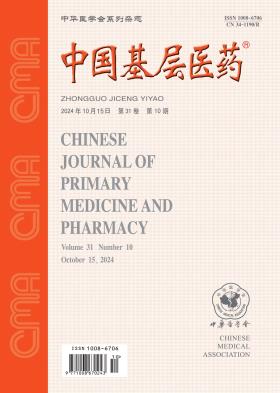Analysis of clinical and imaging features of 17 pregnant patients complicated with PRES
引用次数: 0
Abstract
Objective To investigate the imaging characteristics of pregnant women complicated with posterior reversible encephalopathy syndrome(PRES), in order to improve the understanding of the disease. Methods The clinical and imaging data of 17 pregnant patients complicated with PRES from July 2011 to July 2017 of the People′s Hospital of Huadu District in Guangzhou were analyzed retrospectively. Results All patients were preeclampsia or eclampsia in pregnancy (5 cases with eclampsia, 12 cases with eclampsia). Among them, 8 cases underwent CT examination, 9 cases underwent MRI examination Typical imaging findings were symmetrical subcortical white matter and subcortical cerebral edema presented as irregular low density area on CT images and symmetric subcortical white matter and abnormal cortical signal on MRI fluid-attenuated inversion recovery (FLAIR)images.Diffuse-limited signals were not observed in both DWI and ADC.The location of lesions were parieto-occipital lobes[100.0%(17/17)], followed by frontallobe[88.9%(15/17)], temporal lobe[29.4%(5/17)], basal ganglia[41.2%(7/17)], corpus callosum[17.6%(3/17)], radiant crown[11.8%(2/17)]and cerebellum[11.8%(2/17)]. After symptomatic treatment, the clinical symptoms of all patients were significantly improved after 1-2 weeks, and no clinical symptoms were observed after 1-3 months of follow-up. Conclusion The characteristic imaging features can be assessed in pregnant patients complicated with PRES, which presented as symmetrical subcortical white matter and subcortical cerebral edema, mainly involved the region supplied by posterior circulation, got good results after treatment timely. Key words: Brain disease; Posterior reversible encephalopathy syndrome; Pregnancy; Cerebral edema vasongenic; Magnetic resonance imaging; Tomography; X-Ray computed; Differential diagnosis妊娠合并PRES 17例临床及影像学特征分析
目的探讨孕妇并发后部可逆性脑病综合征(PRES)的影像学特点,以提高对该疾病的认识。方法回顾性分析广州市花都区人民医院2011年7月至2017年7月收治的17例妊娠合并PRES患者的临床及影像学资料。结果所有患者均为先兆子痫或妊娠期子痫(子痫5例,子痫12例)。其中CT检查8例,9例患者接受了MRI检查。典型的影像学表现为对称性皮质下白质和皮质下脑水肿,CT图像呈不规则低密度区,MRI液体衰减反转恢复(FLAIR)图像呈对称性皮质下白质和异常皮质信号。DWI和ADC均未观察到扩散限制信号。病变位置为顶枕叶[1000%(17/17)],其次为额叶[88.9%(15/17)]、颞叶[29.4%(5/17)]、基底节[41.2%(7/17)],胼胝体[17.6%(3/17)];辐射冠[11.8%(2/17)]和小脑[11.8%,随访1-3个月未发现临床症状。结论妊娠期并发PRES的影像学特征可以评估,表现为对称性皮质下白质和皮质下脑水肿,主要累及后循环供血区,及时治疗效果良好。关键词:脑疾病;后部可逆性脑病综合征;妊娠;血管紧张性脑水肿;磁共振成像;层析成像;X射线计算;鉴别诊断
本文章由计算机程序翻译,如有差异,请以英文原文为准。
求助全文
约1分钟内获得全文
求助全文
来源期刊
CiteScore
0.10
自引率
0.00%
发文量
32251
期刊介绍:
Since its inception, the journal "Chinese Primary Medicine" has adhered to the development strategy of "based in China, serving the grassroots, and facing the world" as its publishing concept, reporting a large amount of the latest medical information at home and abroad, prospering the academic field of primary medicine, and is praised by readers as a medical encyclopedia that updates knowledge. It is a core journal in China's medical and health field, and its influence index (CI) ranks Q2 in China's academic journals in 2022. It was included in the American Chemical Abstracts in 2008, the World Health Organization Western Pacific Regional Medical Index (WPRIM) in 2009, and the Japan Science and Technology Agency Database (JST) and Scopus Database in 2018, and was included in the Wanfang Data-China Digital Journal Group and the China Academic Journal Comprehensive Evaluation Database.

 求助内容:
求助内容: 应助结果提醒方式:
应助结果提醒方式:


